#sopwith triplane
Explore tagged Tumblr posts
Text











The Sopwith Triplane is a three-wing single seat scout (fighter) mounting a Vickers .303 caliber machine gun that fired through the propeller. It was privately developed by Sopwith and flew exclusively with the Royal Navy from December 1916 through the end of 1917 when they were replaced by Sopwith Camels. Pilots nicknamed the Sopwith Triplane the “Tripehound”, “Trihound”, “Triplehound”, or simply the “Tripe”. Sopwith chose the triplane configuration to provide excellent pilot visibility, rate of climb and maneuverability.
Only around 160 were built. The powerful 130-hp Clerget 9B rotary engine (117mph Max) gives it a tremendous 1,000ft/min rate of climb, high-altitude performance, and exceptional maneuverability; out-performing German scouts except for level flight and diving speeds. Unfortunately, this was also offset by its single gun and difficulty to repair.
29 notes
·
View notes
Text

1917 07 Castor Oil Music - Russell Smith
Castor Oil Music depicts Sopwith Triplane N533, one of several triplanes flown by RNAS Cdr Raymond Collishaw. Collishaw, who commanded “B” Flight of Naval Squadron 10, scored two of his 60 victories in this machine. N533 bore the name “Black Maria” on its fuselage and was marked with a large “C” on the fuselage and upper rear elevator. This was one of only six Sopwith Triplanes which were equipped with twin Vickers machine guns rather than the single Vickers which most Triplanes were armed with. Although only about 150 Sopwith Triplanes were built, it was considered a successful design, and is acknowledged to be the inspiration for Anthony Fokker’s more famous Dr.1 triplane. Collishaw thought highly of the design stating “The Triplane I found to be a delightful machine - in my estimation much preferable to the Pup.” The title, Castor Oil Music, refers to the castor oil which was commonly used to lubricate the rotary Clerget engines used by the Sopwith Triplane. Here was see Collishaw warming his engine as he prepares for another mission
77 notes
·
View notes
Text
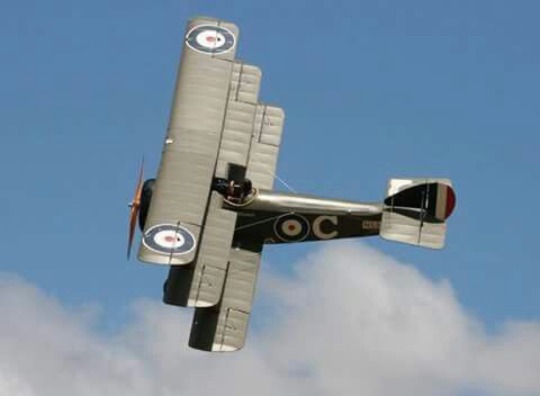
Searching for an outstanding fighting airplane, Sopwith's experimental dept. decided early 1916 to build an entirely new design. A triplane
@ron_eisele via X
2 notes
·
View notes
Text
Rediscovery of teenage aeroplane art. Why yes, I was, and am, very Sopwith obsessed
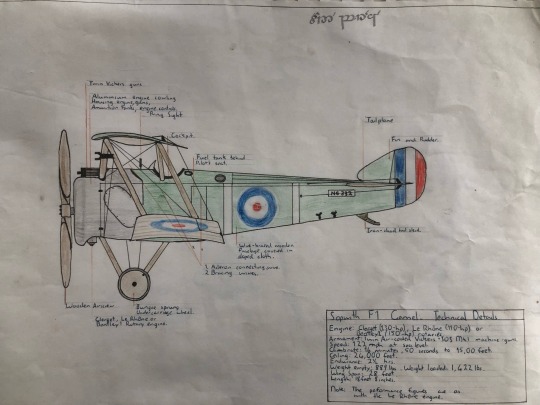

At about this time, (‘86 or ‘87) I also discovered Tommy Sopwith was still alive, so wrote him fan mail
2 notes
·
View notes
Text
Ritter Model D ‘SeePfau’ - "Doom of the Caproni Push"

Role: Seaplane Scout Served With: UWF, Macchi, Fokker First Flight: 1587 Strengths: Nimble in the Turn Weaknesses: Underarmed Inspiration: Sopwith Triplane (1916)
Description:
Though the Ritter Model D Pfau began life as a conventional land-based triplane, it did not stay that way for long. Originally, it was produced by Ritter for the United Western Federation as an iteration on the Model C, hopefully giving the flagging UWF Luftwaffe an edge against the larger Gotha Luftstreitkräfte. It was soon overshadowed by the more successful Model F and relegated to supplemental roles until the fall of the UWF.
However, when the Ritter factories evacuated to Macchi, the Republics found a new use for the Model D. Its stability made it a natural fit for their island garrisons, and the SeePfau was born.
In addition to still being common there, thousands were seized as trophies by the Fokker Kingdoms after the Macchi Republics fragmented into uprisings, guerrilla armies, and banditry. The survivors were sent to fischer villages to be used for training, and many remain there to this day.
2 notes
·
View notes
Text

Replica Sopwith Triplane displaying during the Shuttleworth 2017 Season Premier Airshow
40 notes
·
View notes
Text

The Red Barron chases off (@tristandelarkadien 's) The Evermore.
#the red barron#the evermore#ottoway#ww1 fiction#original comic#planes#wwi#aviation#dog fight#biplane#Triplane#Sopwith camel#Cameo#fokker
16 notes
·
View notes
Video
Triplane by Treflyn Lloyd-Roberts Via Flickr: Sopwith Triplane N6290 flies over Old Warden during its display at the Shuttleworth Collection's 2024 Summer Evening Air Show. Aircraft: Sopwith Triplane replica N6290 "Dixie II" (G-BOCK), built in 1988 by Northern Aeroplane Workshops. Location: Old Warden Aerodrome, near Biggleswade, Bedfordshire.
#Sopwith#Triplane#N6290#fly#flies#over#Old#Warden#during#flying#display#Shuttleworth#Collection#2024#Summer#Evening#Air#Show#airshow#military#heritage#aviation#Great#World#War#1#One#I#WW1#WWI
22 notes
·
View notes
Video
‘World War I – Sopwith Camels attacking a mixed formation of Fokker triplanes and Pfalz Scouts’ by totallymystified Via Flickr: Illustration by Hardy for the article Fifty Fighting Years – Half A Century Of British Air Power by John Taylor. From the Eagle Annual, 1963.
#Fooker#Triplane#Pfalz#Scout#World War I#First World War#The Great War#dogfight#Sopwith#Camel#biplane#aeroplane#airplane#aircraft#retro#vintage#nostalgia#Hardy#artist#illustration#illustrator#Eagle#comic#annual#flickr
3 notes
·
View notes
Text
Sopwith Rhino Triplane Bomber
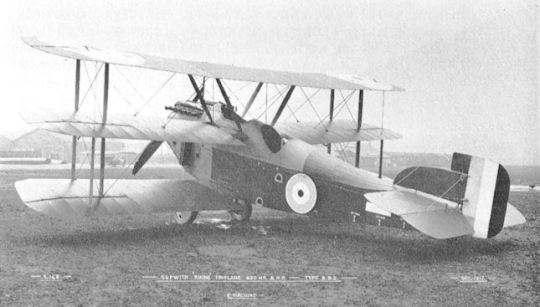
First flying in October 1917, the Sopwith Rhino was a two-seat triplane bomber. Designed as a private venture by Sopwith, it featured an internal bomb load of up to 205kg. Armament consisted of a synchronised Vickers machine gun firing through the propeller disc and a Lewis machine gun in the rear cockpit.
Testing found that the aircraft was nose heavy and the Galloway Adriatic six-cylinder, water-cooled inline engine was subject to overheating. Testing was undertaken at Martlesham Heath in February and March 1918, but it had a poor ceiling and low speed, and was rejected as a service type. Only two prototypes were built.
More photos here.
#bomber#First World War#RAF#RFC#Royal Air Force#Royal Flying Corps#Sopwith#Sopwith Rhino#triplane#triplane bomber#World War One#WWI#FirstWorldWar#RoyalAirForce#RoyalFlyingCorps#SopwithRhino#triplanebomber#WorldWarOne
0 notes
Text
Sopwith Triplane

Back when the pilots were flying knights and the triplanes were their trusty steeds..
180 notes
·
View notes
Text

Sopwith-Triplane
53 notes
·
View notes
Text
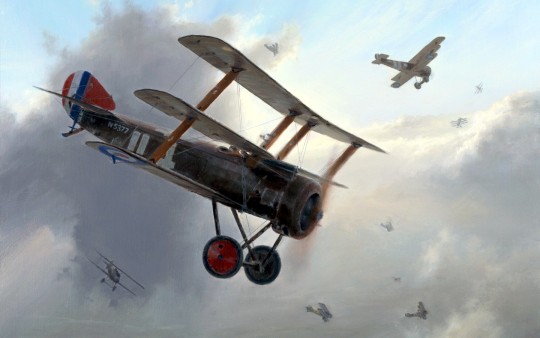
1917 10 Furball - Russell Smith
Furball is a portrait of Sopwith Triplane N5377. This machine first served with 9S Sq RNAS before being transferred to 1 Sq RNAS. N5377 carried a red fin and wheel covers. It was lost in combat on October 5 1917. The pilot, MJ Watson, was taken prisoner and the victory was credited to Ltn Wilde of Jasta 4. Although Sopwith Triplanes are often depicted in PC10 camoflage, which is a greenish brown, they were often finished instead in PC12, a more reddish brown. No one can really say for sure which finish N5377 carried, and the decision to depict it here in PC12 was purely an artistic decision.Although only about 150 Sopwith Triplanes were built, it was considered a successful design, and is acknowledged to be the inspiration for Anthony Fokker’s more famous Dr.1 triplane. The title, Furball, is term often used by pilots to describe an intense, swirling dogfight.
16 notes
·
View notes
Text
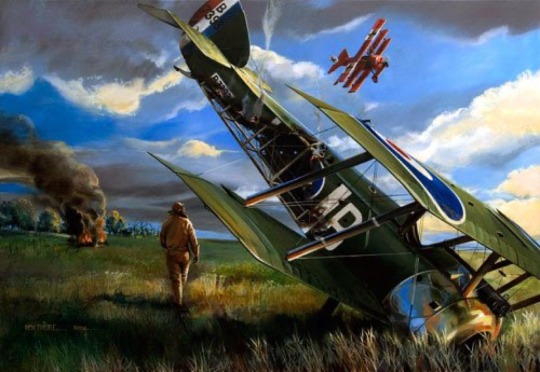
Manfred von Richthofen in his Fokker DrI overflies two Sopwith Camels, his final two victories, WWI
@ron_eisele via X
4 notes
·
View notes
Text
Incorrect, he would be posting wwi rpf
i don't know where you kids get all these precious ideas about snoopy. if he was alive today he would be posting wwii rpf on ao3
#red baron was great war#he literally flew a fokker triplane#snoopy canonically flies a sopwith camel#which is a biplane
2K notes
·
View notes
Text

Sopwith Triplane prototype single seat flying scout at St Pol, June 1916. Serial number N500.
104 notes
·
View notes